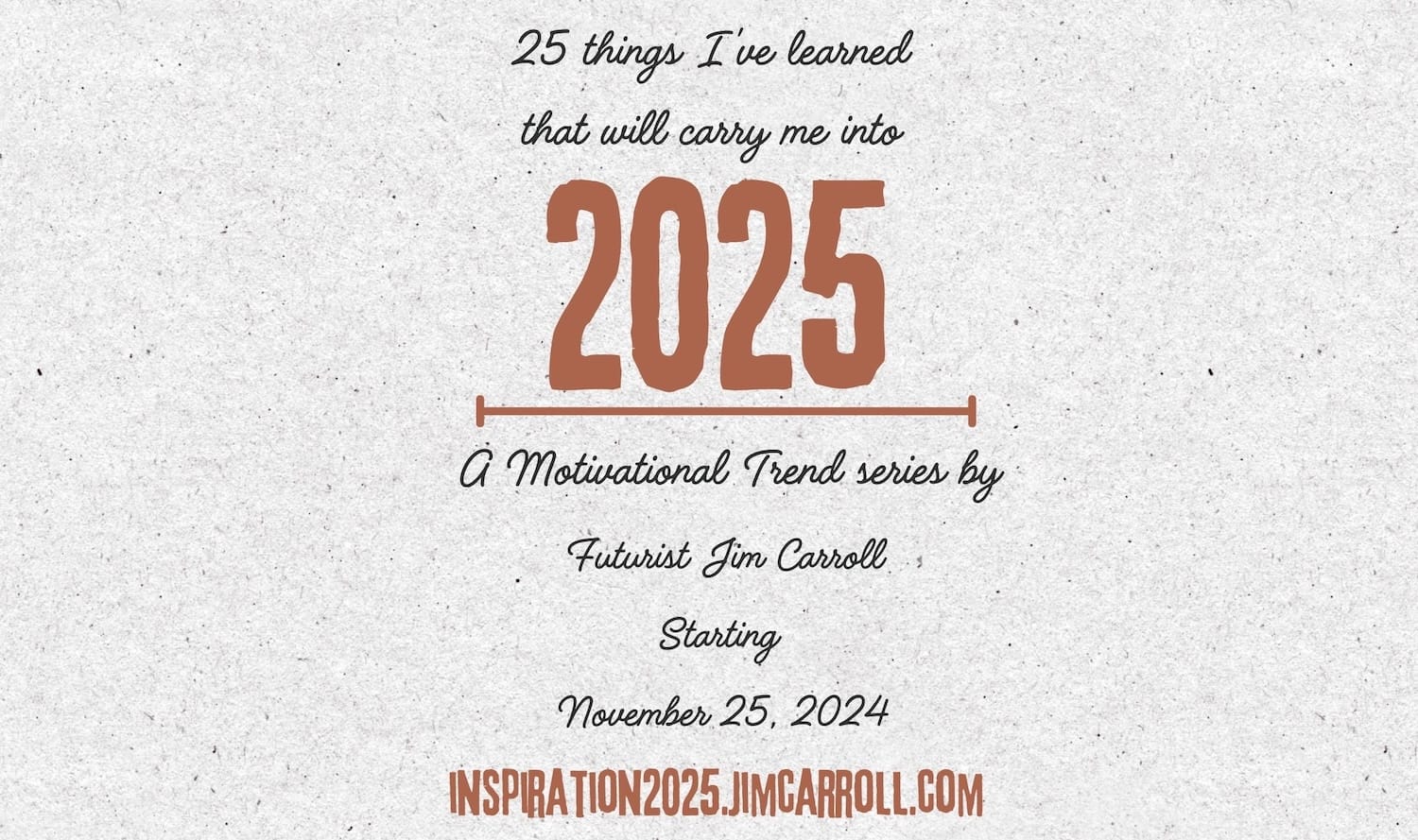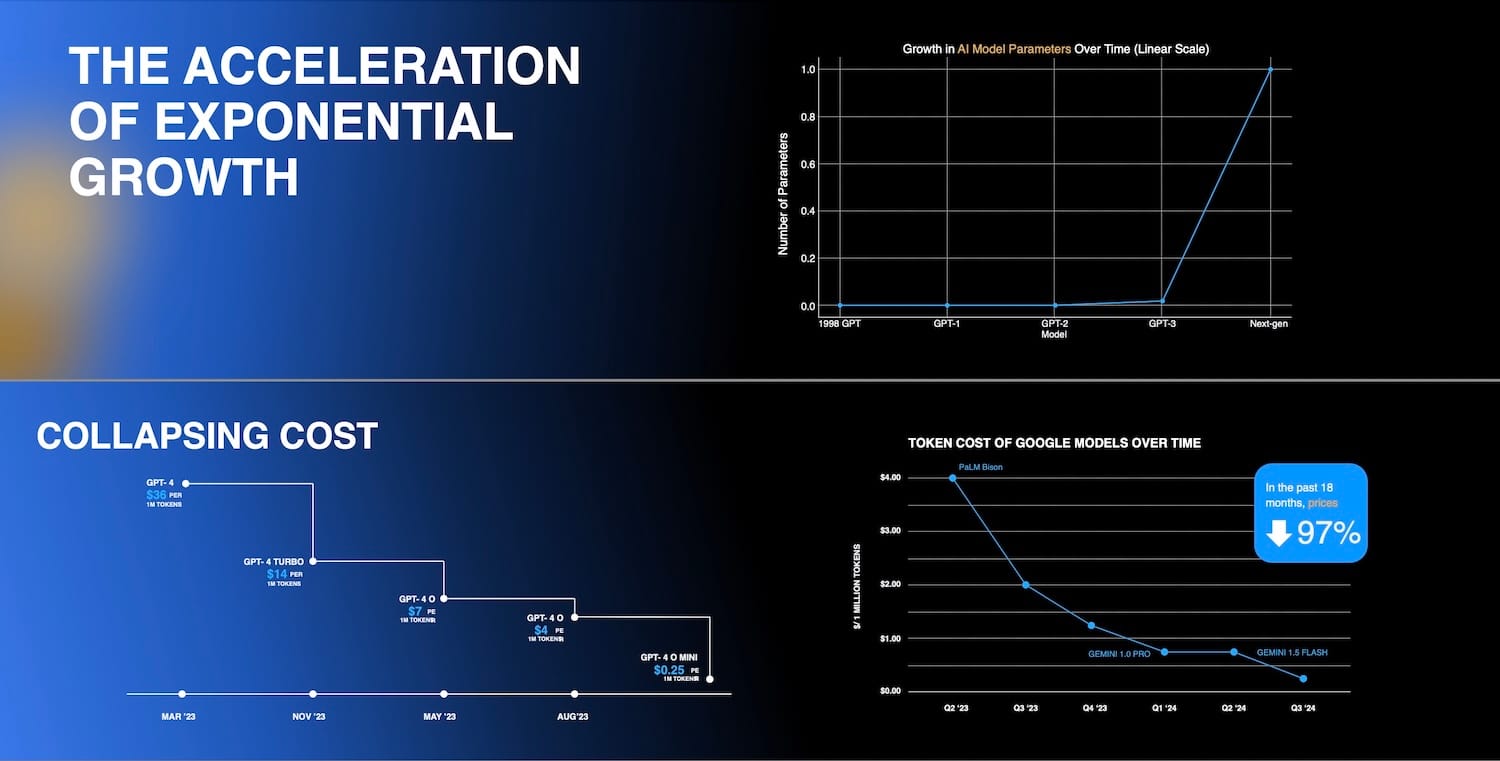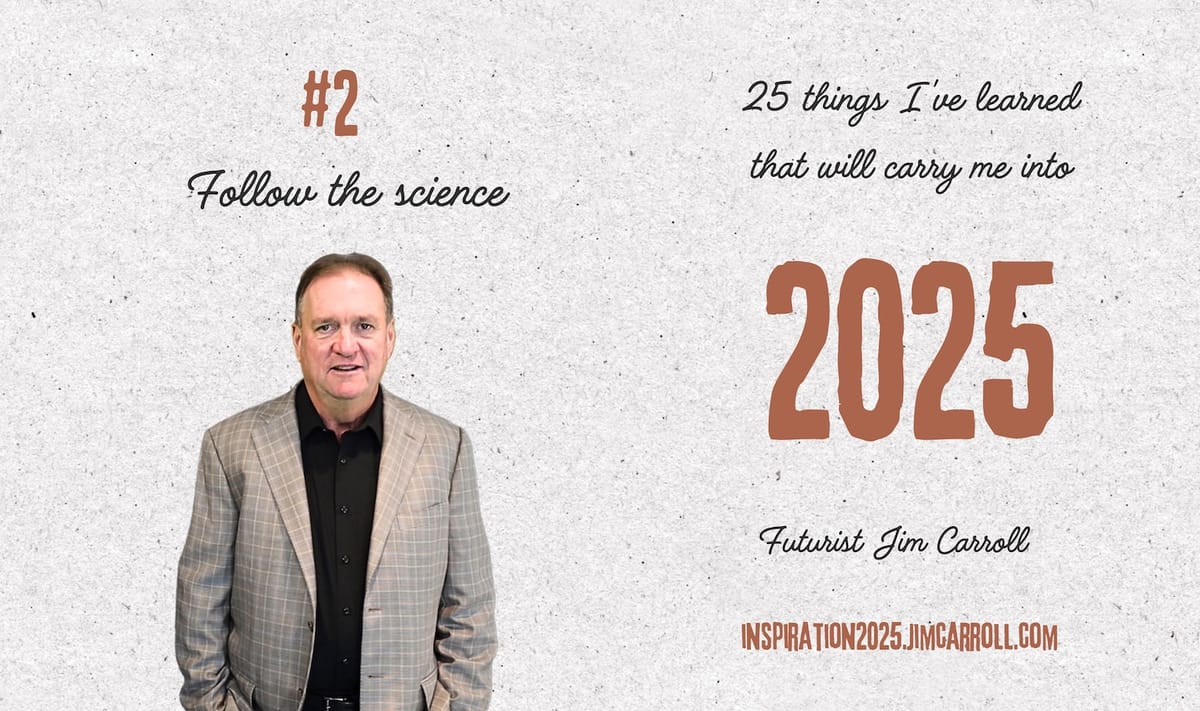"Follow the science" - Futurist Jim Carroll
Futurist Jim Carroll is writing a series, "25 Things I've Learned That Will Carry Me Into 2025." He is putting this together based on his 30-year career as a futurist, trends, and innovation expert, advising leaders of some of the world's most prestigious organizations on how to align to a faster future. He intends for the series to provide valuable guidance to others eager to learn how to move through a year that promises to be volatile, unpredictable, and full of uncertainty. Each day, the post will go out on multiple mailing lists, social media networks, and to the Website https://2025inspiration.jimcarroll.com

If anything will keep me rooted in reality and on the side of optimism in 2025 it will be by continuing to follow the science.
This is in a society in which it seems an incredible number of people continue to reject the reality of both the fact of science itself and the acceleration that is occurring, which is, by and large, improving their lives. Odd.
I shared this slide at a recent event that has to do with our world today.

Three numbers stand out. The cost of sequencing the human genome has gone from about $100 million in 2011 to $200 or less today. The cost of 3D printing from about $50 per cm2 in 2010 to less than fifty cents today. Battery storage technology has gone from $1,100 per kWh to less than $100 today. This is from a section where I speak to the fact that we live in what I call 'the era of acceleration' - simply, we live in a time in which we continue to see the development of magical new ideas that lead to massive new opportunities in a fascinating new future.
While it's difficult to state the absolute accuracy of numbers such as this because things are moving so fast, the fact i, that similar trends abound.
Consider technology. The most telling sign of acceleration has to do with the computing cost per calculation - and that has dropped from $1.24 per gigaFLOP in 2000 to $0.03 by 2020. All this while computers keep getting faster - supercomputer speed increased from 4.9 teraFLOPS in 2000 to 442 petaFLOPS in 2020, and quantum computer qubits scaled from 5 qubits in 2015 to over 400 qubits in 2023. You don't need to know what these ideas mean - you just need to appreciate that change is crazy fast.m Those are pretty big leaps in every perspective, and what it means is that the basic trends of computers that are faster, better, and cheaper will only continue to accelerate.
How about medical science? Genetic engineering? CRISPR gene editing accuracy improved from 77% in 2012 to 99.7% in 2022, and the cost per successful gene edit has decreased from $5,000 in 2015 to $100 or less in 2023. The actual time required for gene modification has reduced from months to hours between 2010-2023. Keep in mind that these trends are leading to faster discoveries of the origins and treatment of cancer and other diseases, as well as other profound new medical discoveries. In that vein, how about medical imaging? The ability to 'see' has improved from an accuracy of 1.5mm in 2000 to 0.1mm and less by 2020. That's happening while things get faster - brain scanning speed increased from 20 minutes per scan in 2000 to 5 seconds in 2022 - all while the image resolution keeps getting better, as the data storage per scan reduced from 1GB in 2000 to 100MB in 2020 despite higher resolution images. How about drug discovery? The time to screen 1 million compounds reduced from 1 year in 2000 to 1 day in 2020, leading to an increase in computer-predicted drug candidate discovery increasing from 100 per year to 10,000 per year between 2010-2020.
Then there is materials science. The discovery of new materials is at the heart of many new trends and discoveries - and the discovery time for new materials has decreased from 20 years to 2 years or less between 2000 and 2020. Better computer simulation in the discovery of new materials is improving, with accuracy going from 60% to 99% between 2010 and 2023. What does that mean? A practical reality is that the number of known crystalline materials increased from 50,000 in 2000 to over 1 million in 2023. Any single new scientific discovery can lead to new industries, disruptive inventions, and 'things' that we cannot yet imagine. How about solar panels? The cost per watt of solar decreased from $7.50 in 2000 to $0.20 in 2023, driven by many factors, one being that solar panel efficiency increased from 12% in 2000 to 47% in 2023.
All this is happening before the impact of AI. How fast is it changing? The training time for large models decreased from 1 month in 2018 to 1 day in 2023, while the model parameter count grew from 1 billion in 2018 to 1.8 trillion in 2023. One of the biggest impacts of AI has to do with machine vision and machine learning - and for that, task accuracy improved from 85% to 99% between 2015-2023 in image recognition. Consider this slide from my deck which outlines that the cost of 'training' AI systems has seen a ridiculous cost collapse in just the last two years, going from $36 per 1 million tokens to thirty-five cents in the case of ChatGPT, and a 97% cost collapse in the cost of training Googe's AI models at the same time.

I could go on, but you get the point.
We live in the era of the acceleration of science, a relentless pace, constantly accelerating even faster. The impact is far-reaching impacts in every single human endeavor. It leads us to fantastic discoveries such as lab-grown human blood for transfusions and surgeries; automated medical and pharmaceutical research laborites; self-healing concrete that is safer and longer lasting 3d printed human organs for transplants; synthetic bacteria used for new materials science; the medical discovery that involves major discoveries every 48 hours; and other fascinating new developments.
Science is at the heart of every single discovery, every significant invention, every massive disruption, and every profound transformation.
And so while it seems vast numbers of people seem content to view the work of science as some type of hoax, the basis of every conspiracy, and an evil plot designed to ruin their lives. We'll spend much of 2025 with a ridiculous theatrical experience unfolding that involves grandiose showmanship by those eager to take out their anger and frustration on the very scientists who are leading to a better future.
It's weird, so to speak.
How do we get through it all? In my case, I'll continue to track the trends that will define our future by following the reality of science.
It's where I discover my optimism, reinforce my hope, and continue to discover my exhilaration with tomorrow.
The acceleration of science is the core of many of the keynotes delivered by Futurist Jim Carroll.

